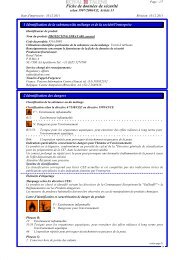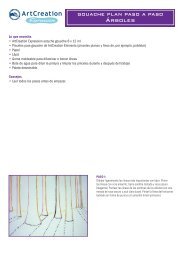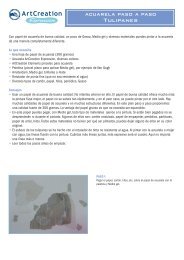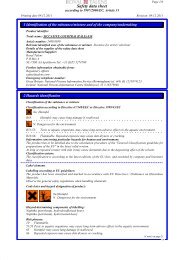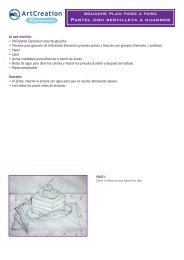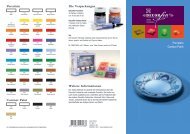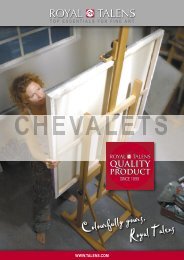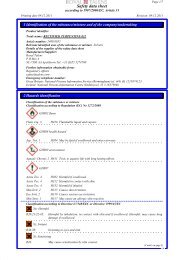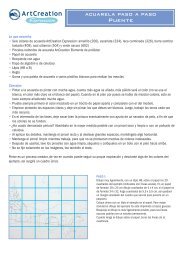Colour booklet
Colour booklet
Colour booklet
You also want an ePaper? Increase the reach of your titles
YUMPU automatically turns print PDFs into web optimized ePapers that Google loves.
colourOpacity and transparency as properties of pigments are only visible if no opaque filler is added to thepaint. However, one example of an opaque paint is Poster <strong>Colour</strong> (Gouache) which is based on an opaquefiller, every colour of this type of paint becomes opaque, irrespective of what pigment has beenused.Tinting strengthThe intensity of a colour determines how much ofthat pigment is necessary to achieve a certain concentrationof colour. We shall take as an exampletwo equal quantities of blue paint, each made withthe same quantity of pigment. The difference is inthe type of pigment: pigment A and pigment B. Wethen take equal quantities of the same white colour.When mixed with an equal quantity of white paint,the mixture containing the blue with pigment A ismuch more concentrated (darker) than that containingpigment B. Pigment A is therefore has a highertinting strength (ill. 8).In addition to the type of pigment the quantity ofpigment also determines the tinting strength of acolour. Again we shall take as an example two equalquantities of blue paint. However, both are nowmade with the same pigment. The only difference isthat more of this pigment has been include in blue Cthan in blue D. When mixed with the samequantities of the same white paint, blue C gives amore intense result than blue D (ill. 9).ABCD++++====[9] The illustration gives a schematicrepresentation of the quantity andsize of the pigment particles in thecolour.In addition the grinding of a pigment affects the tinting strength of the paint. Pigments are ground in amedium. The finer the grinding the higher the tinting strength.pagen 8



